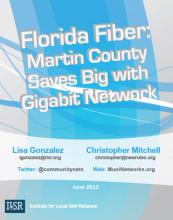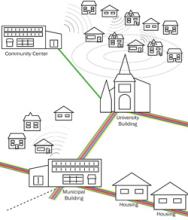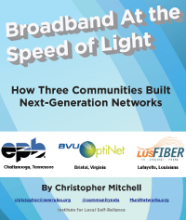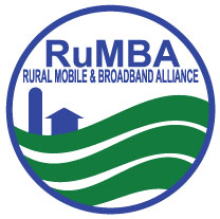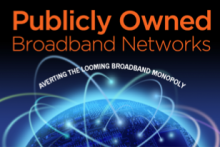Fast, affordable Internet access for all.
Reports
Open Technology Institute Explores Gig.U Model for Community Networks
Moreover, communities deploying wireless mesh technology can incorporate additional service offerings into their networks. Mesh facilitates the use of a community-wide intranet, allowing all users connected to the mesh to access content and applications from local schools, universities, libraries, religious establishments, social service agencies, local governments, and local anchor institutions. To the extent that each of these components is also connected to the mesh, the intranet component of the network would be functional even without Internet backhaul connectivity, and might actually run faster than Internet connections.... Read the rest of our review here ...
How Chattanooga, Bristol, and Lafayette Built the Best Broadband in America
Learning from Burlington Telecom: Some Lessons for Community Networks
Satellite Internet Connection for Rural Broadband
Building an Equity and Justice Movement for Communications
This report is a brief summary of the Knowledge Exchange, written for participants and to share with the field. It reflects the open and frank discussions that took place during the convening, as well as the ease of communication among the group.
Publicly Owned Broadband Networks: Averting the Looming Broadband Monopoly
The Institute for Local Self-Reliance is pleased to release the Community Broadband Map and report, Publicly Owned Broadband Networks: Averting the Looming Broadband Monopoly. The map plots the 54 cities, big and small, that own citywide fiber networks and another 79 own citywide cable networks. Over 3 million people have access to telecommunications networks whose objective is to maximize value to the community in which they are located rather than to distant stockholders and corporate executives.
For several years ILSR has been tracking telecommunications developments at the local and state level. We have worked with businesses and communities protecting their right to self-determination via the fundamental infrastructure for the information-based economy. This report offers some of our findings.
The Internet That Might Have Been
Policymakers often tell us that the Internet succeeded because of a lack of government regulation. For instance, FCC Commissioner Robert McDowell recently noted that the “evolution away from government intervention has been the most important ingredient in the Internet’s success.” These views, while widely shared, happen to be inaccurate. In reality, a diverse range of federal regulations, subsidies, and nondiscrimination protections sustained the Internet’s historic growth. But what if, as many inaccurately assume, these regulations had never existed? What would today’s Internet look like in such a world? In this essay, I provide a fictional alternate history - in form of a satirical book review - to illustrate how differently the Internet might have developed in a truly privatized world. Although the essay below (beginning after this abstract) is fictional, it draws heavily upon both the regulatory history of the Internet and the policy arguments at issue in today’s leading regulatory proceedings.This article covers decisions like Carterfone, the FCC's Computer Inquires, giving control over TCP/IP to the National Science Foundation rather than AT&T, and the intentions of the 1996 Telecommunications Act. It also includes a reminder of the difference between open systems and closed systems:
One important way that open policies achieve this goal is by reducing various types of transaction costs. In open networks, new market entrants can completely avoid negotiating with companies who have “gateway control” over the network. The aspiring entrants do not have to pay—nor seek permission from—the network owners for access. Accordingly, these policies encourage vastly more experimentation and amateur “tinkering.” Closed networks, by contrast, produce relatively less innovation because they rely on centralized network owners to introduce—or at least approve—innovation before it becomes available.This is a fantastic read (really riveting telecom reading -- how often do you get that?) and a good history lesson for people who were not there to see it firsthand over the years.
Local Network Cookbook
Breaking the Broadband Monopoly
[no-glossary]Download[/no-glossary] Breaking the Broadband Monopoly [pdf]
Executive Summary
Across the country, hundreds of local governments, public power utilities, non-profits, and cooperatives have built successful and sometimes pioneering telecommunication networks that put community needs first. These communities are following in the footsteps of the publicly owned power networks put in place a century before. We watch history repeating itself as these new networks are built for the same reasons: Incumbents refusing to provide service or charging high rates for poor service. Cities like Lafayette, Louisiana, and Monticello, Minnesota, offer the fastest speeds at the lowest rates in the entire country. Kutztown’s network in Pennsylvania has saved the community millions of dollars. Oklahoma City’s massive wireless mesh has helped modernize its municipal agencies. Cities in Utah have created a true broadband market with many independent service providers competing for subscribers. From DC to Santa Monica, communities have connected schools and municipal facilities, radically increasing broadband capacity without increasing telecom budgets. These pioneering cities have had to struggle against many obstacles, often created by incumbents seeking to prevent the only real threat of competition they face. Eighteen states have [no-glossary]passed[/no-glossary] laws that discourage publicly owned networks. When lawsuits by entrenched incumbents don’t thwart a publicly owned system, they cross-subsidize from non-competitive markets to temporarily reduce rates in an attempt to starve the infant public network of subscribers. Despite these obstacles, more and more cities are building these networks and learning how to operate in the challenging new era in which all media is online and a high speed tele-communications network is as much a part of the essential infrastructure of a modern economy as electricity was 100 years ago. Communities that have invested in these networks have seen tremendous benefits. Even small communities have generated millions of dollars in cumulative savings from reduced rates – caused by competition. Major employers have cited broadband networks as a deciding factor in choosing a new site and existing businesses have prospered in a more competitive environment. Residents who subscribe to the network see the benefits of a network that puts service first; they talk to a neighbor when something goes wrong, not an offshore call center. At the municipal fiber network in Wilson, North Carolina, they talk of the “strangle effect.” If you have problems with their network, you can find someone locally to strangle. Because public entities are directly accountable to citizens, they have a stronger interest in providing good services, upgrading infrastructure, etc., than private companies who are structured to maximize profits, not community benefits. Residents who remain with private providers still get the benefits of competition, including reduced rates and increased incumbent investment. Some publicly owned networks have decided to greatly increase competition by adopting an “open access” approach where independent service providers can use the network on equal terms. Public ownership and open access give residents and businesses the option of choosing among many providers, forcing providers to compete on the basis of service quality and price rather than simply on a historic monopoly boundary. Perhaps the greatest benefit communities have gained from owning their telecommunications networks is self-determination. Recent court rulings enable private network owners to set their own rules, including increased charges for accessing some sites – much like a cable bill charges more for some programming. The rules are made far from where the customer resides and the criteria used to design such rules maximizes benefit to the private firm, not the community. There is no one model for community broadband. Communities vary greatly in their needs, assets, desires, and culture, not to mention a regulatory environment that varies from state to state. This report presents case studies, evaluates existing networks, offers lessons learned, and highlights the most important issues facing both communities and policy makers at all levels. Public ownership offers the best prospect for building the networks we need to succeed in the 21st century.OneCommunity: An Important Model for America’s Broadband Revival
The Baller Herbst Law Group filed an extensive report with the FCC detailing important information about OneCommunity - a fascinating nonprofit organization connecting many communities with fiber and wireless connectivity in Ohio.


